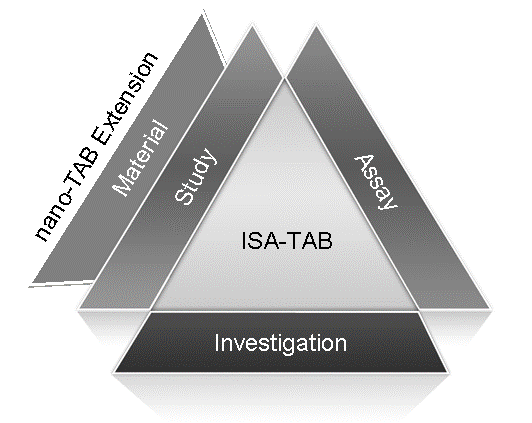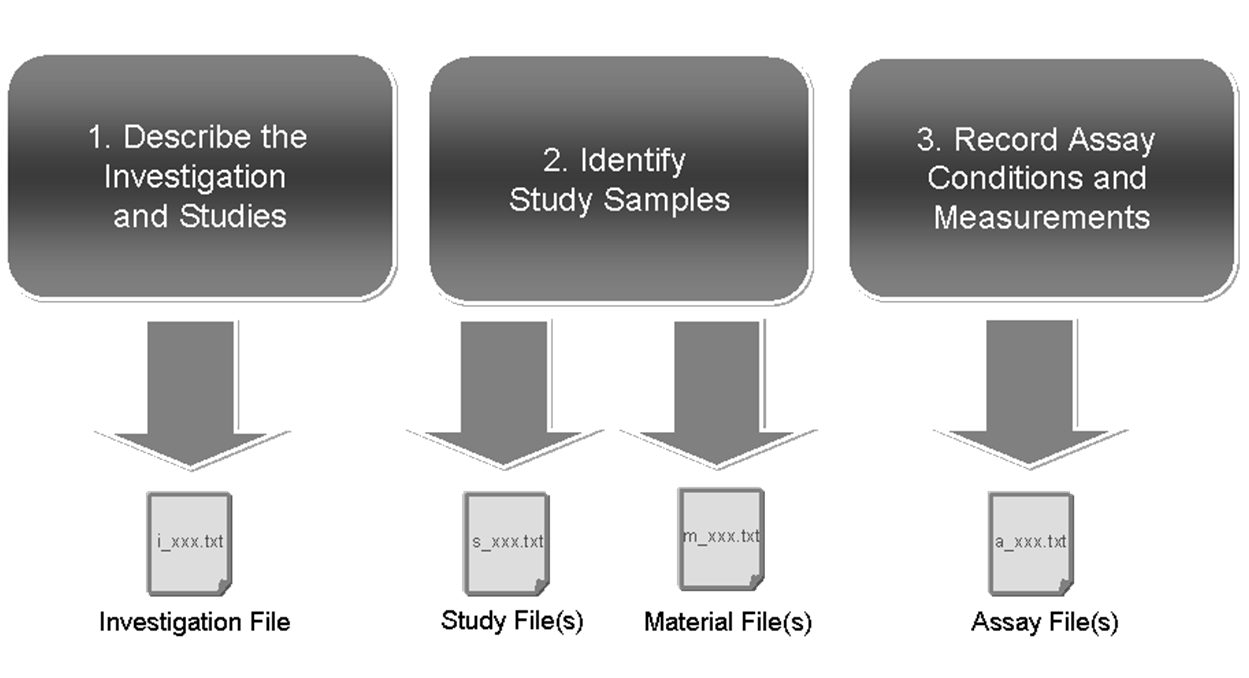 |
Page History
| Section | |||||||||||||||||||||||||
|---|---|---|---|---|---|---|---|---|---|---|---|---|---|---|---|---|---|---|---|---|---|---|---|---|---|
|
1. nano-TAB Introduction
1.1 Rationale
The field of nanomedicine faces many challenges in the development of standards to support meaningful data submission and information exchange. Nanomaterial characterization requires numerous physico-chemical, in-vitro, and in-vivo assays where measurements mostly depend on non-standardized protocols and diverse technology types. Unfortunately, information describing the nanomaterial, including functionalizing entities and three-dimensional (3D) structure, is often represented in an undisciplined fashion. In addition, there has been no standard way to associate this information with the data and metadata from characterization studies. This lack of standardization has been a significant deterrent to meaningful data sharing across the nanotechnology community; few publications contain sufficient information to enable adequate interpretation of results and successful achievement of experimental reproducibility. Furthermore, there has been very limited success in using non-standardized data to represent or derive structure-activity-relationships (SARs) that are critical for understanding the effects of nanomaterial structure on biological activity in nanomedicine.
...
When sharing primary nano-TAB files, other files referenced in these files have to be shared along with the primary files. It is anticipated that content management systems will become available to facilitate the sharing and exchange of files. Until then, these files could be bundled together in a folder and shared as a zip file.
3. nano-TAB v0.6 Files and Structure
3.1 nano-TAB File Structure
Nano-TAB uses the three primary files of ISA-TAB-- investigation file, study file, and assay file; and, introduces a fourth file called the material file (FIG 1). Other files such as raw/derived data files, image files, protocol documents, etc., referenced in the nano-TAB files have to be shared along with the nano-TAB files.
FIG 1. Nano-TAB File Structure
3.2 Constructing a nano-TAB File
In In FIG 2, the nano-TAB file development process is described. Typically, the investigation file is developed first and describes the overall investigation, associated studies and assays. The investigation file is a text file with a naming convention of “i_xxx.txt” or “i_xxx.xls,” in which xxx can be any name provided by the investigator. Once the investigation file has been completed, one or more study files (following the convention “s_xxx.txt” or “s_xxx.xls”) can be created. Similarly, one or more material files can be created. The material file describes the nanomaterial (or small molecule) and its components including structural information and follows the naming convention “m_xxx.txt” or “m_xxx.xls”. Assay files (following the convention “a_xxx.txt” or “a_xxx.xls”) are created for all assays performed. Each assay is defined by the endpoint measured and the technique used to measure that endpoint. Data files (raw or derived) specific to each type of assay can be associated to the respective assay files by referencing the names of the data files in the assay files.
FIG 2. Nano-TAB File Development Process
...

